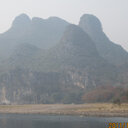Impacts of coal fly ash on plant growth and accumulation of essential nutrients and trace elements by alfalfa (Medicago sativa) grown in a loessial soil.
Հիմնաբառեր
Վերացական
Coal fly ash (CFA) is a problematic solid waste all over the world. One distinct beneficial reuse of CFA is its utilization in land application as a soil amendment. A pot experiment was carried out to assess the feasibility of using CFA to improve plant growth and increase the supply of plant-essential elements and selenium (Se) of a loessial soil for agricultural purpose. Plants of alfalfa (Medicago sativa) were grown in a loessial soil amended with different rates (5%, 10%, 20% and 40%) of CFA for two years and subjected to four successive cuttings. Dry mass of shoots and roots, concentrations of plant-essential elements and Se in plants were measured. Shoot dry mass and root dry mass were always significantly increased by 5%, 10% and 20% CFA treatments, and by 40% CFA treatment in all harvests except the first one. The CFA had a higher supply of exchangeable phosphorus (P), magnesium (Mg), copper (Cu), zinc (Zn), molybdenum (Mo), and Se than the loessial soil. Shoot P, calcium (Ca), Mg, Mo, boron (B), and Se concentrations were generally markedly increased, but shoot potassium (K), Cu, and Zn concentrations were generally reduced. The CFA can be a promising source of some essential elements and Se for plants grown in the loessial soil, and an application rate of not higher than 5% should be safe for agricultural purpose without causing plant toxicity symptoms in the studied loessial soil and similar soils. Field trials will be carried out to confirm the results of the pot experiment.



